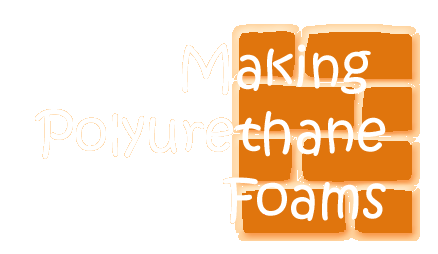

Most likely you're sitting in a chair right now. This chair may or may not have cushion. If it does, that cushion is most likely made from a polyurethane foam. So are the cushions of the seats in your car, and probably the pillows you sleep on, as well as the cushions of your couch. That's right, couch potatoes, your lifestyle depends on the existence of polyurethane foams.

The most important use of
polyurethane foams.
"But how do we make these all-important foams?" you ask. So I am answering, "add water when you make the polyurethane". It's as simple as that. Really, it is! We'll show you.
Remember from the page on making polyurethanes where we talked about oligomers, dimers, trimers, etc.? Then you know that these oligomers can have isocyanate groups on the ends of them. That carbon in the isocyanate group is sandwiched right between two electronegative atoms, oxygen and nitrogen. Remember electronegative atoms will suck electrons away from other atoms. So the nitrogen and the oxygen leave that poor carbon really lacking for some electrons. When that water we added, with two lone pairs of electrons, sees this it comes to the rescue of that cabon and donates a pair of electrons to it.
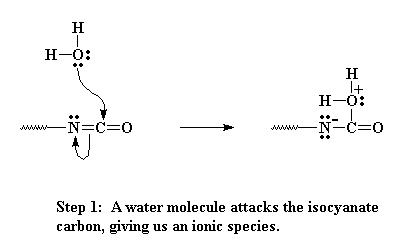
Thus satisfied as far as electrons are concerned, one of the pairs it shared with the nitrogen, in a double bond, leaves and rests right on that nitrogen, giving it a negative charge.
Nitrogens hate having negative charges, so it looks for a way to balance the charge. It solves its charge problem by swiping a hydrogen from the water.

Never satisfied, that nitrogen then decides to swipe another hydrogen from the same place. When this happens, we end up with an amine on the end of our oligomer, and carbon dioxide gas is expelled.
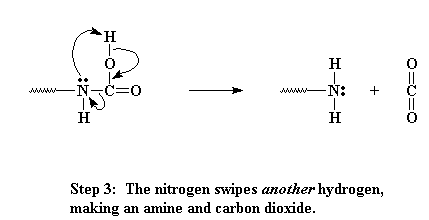
If you want to see a movie of the whole process of water attacking the isocyanate to form the amine, just click here you will surely see it.
This amine can react with another isocyanate group, just like the water did, only this time, we end up with these two oligomers joining, and they are joined by a urea linkage when its all over.
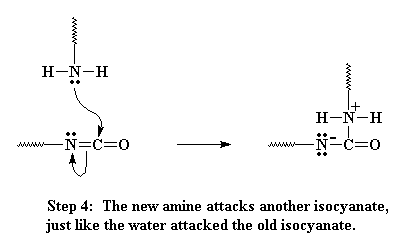
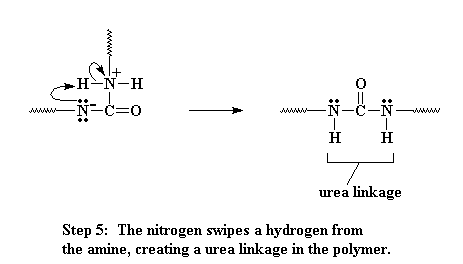
If you want to see a movie of the whole process of the amine reacting with the isocyanate to form the urea, click here.
So big deal. Our polyurethane has a few urea linkages instead of urethane linkages. Who cares? Well, to be honest, nobody does. The urea linkage doesn't alter the properties of the polymer that much. What is important is what happened back in step three. Remember that carbon dioxide gas that was expelled? This gas is very important.
Here's why:
When the polymerization reaction begins, the mixture is a liquid, and any carbon dioxide that is produced just bubbles away. No problem. But as the reaction progresses, and molecular weight increases, the mixture will become more and more viscous, until it becomes a solid. When this happens, the carbon dioxide bubbles will be trapped in the viscous liquid. When the polymer solidifies, they stay there, trapped. These bubbles make the polymer a foam!

|
Return to the Making Polyurethane Page |

|
Return to the Polyurethane Page |

|
Return to Macrogalleria Directory |
